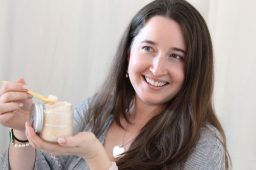
What Is Kinesiology?
- July 08, 2020
- by
- admin
Kinesiology is a scientific study of human movements. It deals with physiological, anatomical and biomechanical principles and mechanisms.
Kinesiologists first take a Formation en kinésiologie and eventually pursue work as physical therapists. They also might decide to enter the field of athletic training.
Muscle Function Testing
Applied Kinesiology is based on muscle testing, and relies on the body’s ability to communicate naturally with its own systems. This allows a practitioner the ability to use a body’s information system and innate health in order to assess what might be contributing to a customer’s problem. Muscle testing is used alongside other clinical tools like categorizing symptoms and assessing bloodwork, as well as creating a thoughtful timeline of a client’s health history.
 The basic concept of AK is that a strong, healthy body is designed to move easily and efficiently with a clear flow of energy. This allows the brain to focus more on other aspects of life such as relationships, learning and creative endeavors. When the body is functioning optimally, the resulting sense of well-being is also felt mentally, emotionally and physically.
The basic concept of AK is that a strong, healthy body is designed to move easily and efficiently with a clear flow of energy. This allows the brain to focus more on other aspects of life such as relationships, learning and creative endeavors. When the body is functioning optimally, the resulting sense of well-being is also felt mentally, emotionally and physically.
The nervous and musculoskeletal system are interconnected, allowing movement through the contraction and releasing of muscles and joints. When a muscular imbalance is present, it can lead to discomfort, dysfunction and disease.
Kinesiology uses manual muscle testing along with other modalities in order to identify imbalances. A kinesiologist could use muscle testing as a way to identify an emotional issue, such as anxiety or depressive disorder, that might be contributing to abdominal and digestive pain. A kinesiologist would also use the skill set to determine whether a client was absorbing nutrients properly or if he or she needed to consume additional vitamins and minerals.
A common application of kinesiology is to identify food allergy. A simple test can be conducted to quickly discover what substances are having a weakening effect on the body, such as dairy or gluten, and kinesiology techniques can then begin to address the issue without the need for medications.
A bachelor’s in kinesiology can prepare students for a wide range of careers. Many graduates go on to become physical therapists or chiropractors. Others continue their education and pursue advanced degrees such as in high-performance athletic competitions, fitness leadership, or medical research.
Assessments
Kinesiology is a scientific study of human movements, which includes the study of physiological, anatomical and biomechanical principles, as well as mechanisms of movement. Kinesiology is widely used in the fields of health, rehabilitation and exercise science. It can be used to identify and correct dysfunctional movement patterns, which lead to pain and poor performance. It is also helpful in helping clients reach their goals by improving the quality of their lives through increased fitness and emotional stability, flexibility, and overall physical function.
During the assessment procedure, your kinesiologist collects a complete medical history and lifestyle information. The kinesiologist will use gentle manual muscle responses tests while you are fully dressed to identify imbalances that may be contributing your stress. They will offer you a plan to restore balance. This will involve a variety of techniques, including diet, nutritional supplementation, stress reduction methods, and exercise.
After completing your kinesiology program, you can apply to become a Registered Kinesiologist. You will be required to participate in the peer assessor’s interview process and submit your portfolio. You will be asked to answer situation-based questions and/or cased-based questions about your clinical and non-clinical practice, your actions and the patient or client outcomes.
As a RK, you can work in hospital, long-term care, clinic and private settings with people who have musculoskeletal injuries and disorders. You can also choose to work as a functional assessment specialist, exercise therapist or ergonomist. You may wish to further your education by enrolling into medical or physical therapy schools to pursue a career in the human movement field.
Some kinesiology graduate find employment as strength coaches for professional sport teams and organizations. Some kinesiologists decide to pursue graduate study to become researchers or professors within the field of movement sciences. Others decide to become massage therapists and chiropractors.
Exercise
Kinesiology is a study of human function, performance, and movement and how they relate to health, quality-of-life, and society. It includes studies on movement and body mechanics and examines the human response to movement-related diseases and exercise. Although kinesiology, and exercise science is often considered to be the same field there are distinct differences.
The practice of kinesiology is often used to promote physical, emotional and spiritual health. It uses manual muscle tests to identify and treat problems in the nervous, skeletal or muscular system. The practitioners believe that identifying these problems and treating them can help prevent injury, pain, and disease.
Those who earn a bachelor’s or master’s degree in kinesiology can pursue careers as fitness instructors, personal trainers, coaches or athletic directors. Others can become clinical researchers or occupational therapists. Some kinesiologists decide to specialize in an area, such as massage therapy, sports medicine, or biomechanics.
Kinesiologists may use their education to create fitness programs for patients who have specific health problems, such as cancer or stroke. They may also assist with rehabilitation and reconditioning after an injury. Kinesiologists work with all age groups from infants to elderly people.
Some kinesiologists also choose to focus on the study of how physical activity affects the brain, known as neuroplasticity. This is based on the idea that the brain can learn and adapt as a result of physical activities.
There is a lot of crossover between the various fields that require a bachelor’s or graduate degree in order to enter the profession. Exercise science, physical therapy, and physiology are some of the fields that require a bachelor’s or graduate degree to enter. Others include athletic training, dancing, occupational therapy, or biomechanics. Students can combine these disciplines into a dual degree program to expand their career options.
Treatment
Kinesiology is an energetic health practice based on a series of manual muscle tests that provide “feedback” about the balance of energy within the body. These methods are used by practitioners to help the body recover after stressors, and restore its natural ability to function optimally. These practitioners may work as rehabilitation specialists, exercise therapists, ergonomists, return to work specialists, case managers and medical legal evaluators in hospital, clinic and community settings.
Kinesiologists also often specialize in areas such as acupuncture, cranial sacral therapy and nutrition. Kinesiology practitioners, who are rooted in acupuncture and chiropractic, believe the body has a healing power that can be accessed through muscle monitoring. They also use a combination techniques such as massage, nutrition, energy reflex manipulation (using gentle acupressure), and emotional releasing in order to balance the body holistically.
Muscle monitoring allows a kinesiologist access to information in the subconscious through a client. This technique is useful for clients with blocked emotions. For example, a client with an undiagnosed illness may be experiencing a low level of functioning in their body because of chronically negative thoughts that are impeding the flow of energy through the meridians. The kinesiologist works with the client to identify these thoughts and help them release them.
Generally, a session begins with the kinesiologist asking the client about their current health and lifestyle. This is to determine whether there are any underlying problems that need to addressed before moving forward with the muscle tests. The kinesiologist explains what to expect and how the process works.
The kinesiologist may use different techniques on the body based on the results. If, for example, the kinesiologist discovers that a client has a neck problem and that their lower-back is weak, he will use techniques like ‘figure four stretch’ to strengthen that lower-back.
A kinesiologist may also discuss with the client nutritional supplements, flower essences or other essences, and other lifestyle changes as needed. This helps the client to maintain positive changes that occur during and after a session.





